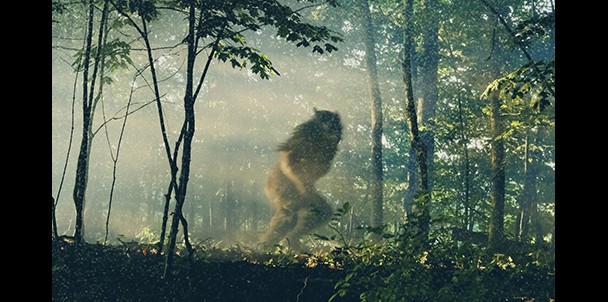Google Earth is a blessing and a curse. Obviously it’s nice to see amazing satellite images of the Earth, and it’s awesome to be able to zoom in and see where we live or places we’ve never been to. Then again, there are people who are constantly finding UFOs, monsters, ghosts, and sea serpents in the images. Most of the images look somewhat interesting, if nothing else, but are easily explainable by distortions in the imaging method itself. I suspect that is the case with this photo of an alleged New Zealand sea monster. And also, I’m not sure why the whale explanation is immediately discounted.
A mystery sea creature seen on Google Earth is suspected to have caused an unexplained wake in New Zealand’s ocean waters. Opposing Views reports that last week an unusual wake was seen at Oke Bay of the Bay of Islands located in the Far North District of the country’s North Island.
Pita Witehira of Hamilton, New Zealand, found the interesting image on Google Earth while he was doing some holiday research. The unidentified creature is thought to be around 40-feet long, judging by the size of the wake.
Witehira rules out a boat causing the wake since white froth wasn’t seen in the water. He has a different explanation for it.
“The Native Maori would call this a ‘Taniwha’ (‘Troll’) as it appears not to be a whale and it is far too big to be a shark. It is moving too fast and turning too sharply to be a whale.”
The Google image was reportedly captured by satellite around 11:30 a.m. on January 30 of this year.
Witehira says he owns some property near Oke Bay, and says whatever created such a wake, there would have to be “a lot of weight under the water to create that kind of drag.”
Oke Bay is a peaceful white sand beach with shallow water of about 130-feet-deep which suddenly drops into the bay. Witehira adds that abundant undergrowth is in the deeper sections of the bay.
According to Colorado News Day, the intriguing discovery surfaces after a giant crab about 50-feet-wide allegedly lurked below shallow waters in England. The news emerged in October in the seaside town of Kent. Some believe it proves “Crabzilla” exists, while others think it’s a sandbank shaped like a crab, or maybe it’s some kind of hoax.
In a separate Inquisitr article, a woman found a mystery sea creature while walking on an Australian beach. It was a red blob that some joked was a whale placenta, but a spokesperson from Queensland Museum surmised it was a sea slug.
Is there really a large mystery creature in ocean waters not yet discovered? In May 2013, a mysterious sea monster’s carcass washed ashore on New Zealand’s Bay of Plenty. It had decomposed to the point of being unable to determine what it was at first. As Science World reports, many thought it could have been a giant saltwater crocodile or a moray eel. A marine biologist eventually identified the mysterious sea creature as a decomposed orca whale. The whale’s distinct flipper helped aid in the biologist’s determination.
If a whale can’t turn that sharply, what makes it possible for a sea monster, which we would have to assume is about the same size and mass as a whale, to be able to do so?




